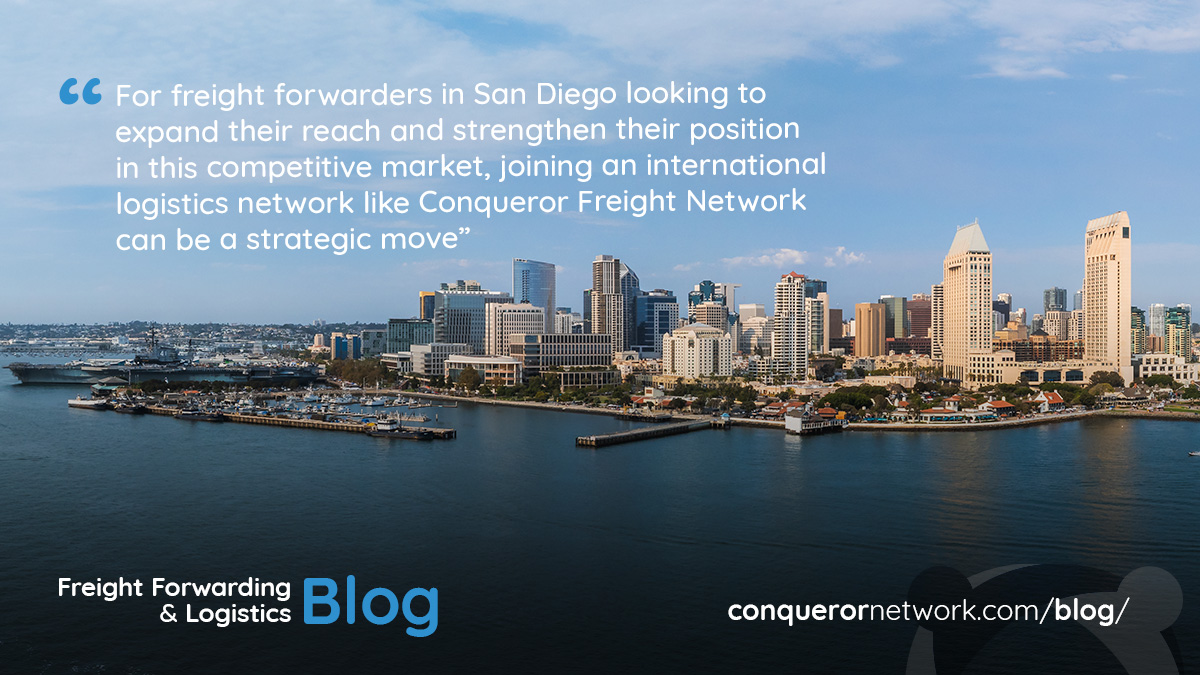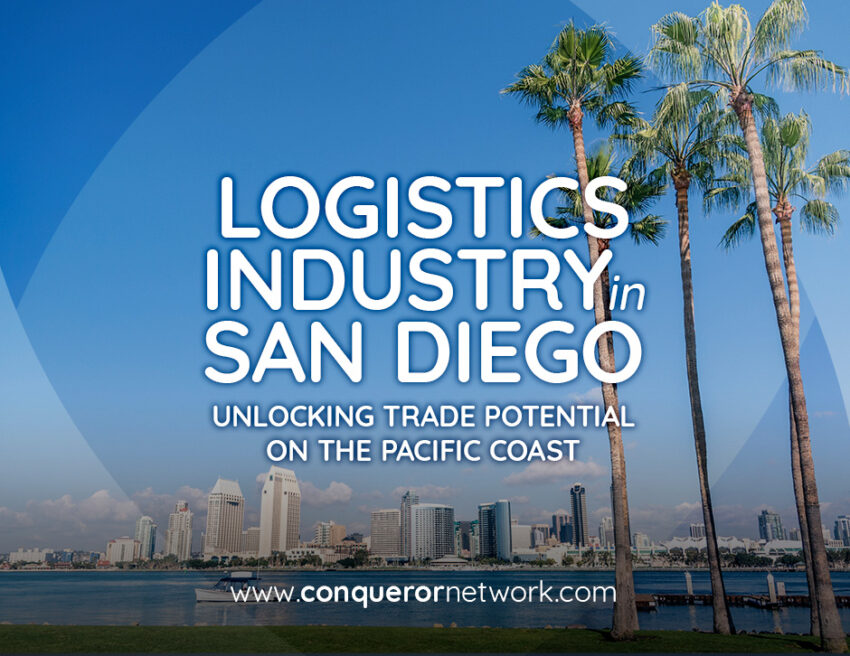San Diego may be known for its beaches and biotech, but under the surface, it’s also a key logistics gateway with global potential. Its strategic location along the US-Mexico border, access to Pacific trade routes, and proximity to one of the busiest ports in the world (Los Angeles/Long Beach) make it a crucial part of the western supply chain. And while it doesn’t always get the same spotlight as LA or San Francisco, San Diego is quietly building a logistics ecosystem that’s nimble, tech-driven, and increasingly international.
Let’s take a closer look at why San Diego matters in the freight world, and how the industry there is evolving.
Where location meets opportunity
San Diego sits just north of Tijuana, giving it direct access to Mexico’s manufacturing base. This makes it a natural hub for cross-border logistics, warehousing, and distribution. Add to that its commercial port, international airport, highway connections, and rail links, and you’ve got a multi-modal gateway primed for growth. It’s also one of the few US cities where cargo can move easily between maritime, air, and land modes without long inland drayage. For freight forwarders, this opens the door to flexible routing options, especially for high-value, time-sensitive, or cross-border cargo.

Key drivers shaping the industry
1. Nearshoring to Mexico
As US companies shift supply chains closer to home, Tijuana and Baja California are seeing a spike in manufacturing, especially in automotive, electronics, and medical devices. San Diego serves as the logistics back-end for this production boom, offering warehousing, freight forwarding, and customs brokerage. Forwarders who understand both sides of the border stand to benefit enormously.
2. Air cargo on the rise
While not a massive cargo airport yet, San Diego International (SAN) has been upgrading to handle more freight, especially for electronics, perishables, and pharma. It’s smaller size works in its favor, allowing for less congestion, faster handling, and better efficiency for regional cargo.
3. Cross-border collaboration
San Diego and Tijuana share one of the busiest land border crossings in the world. Programs like the Unified Cargo Processing system and the Otay Mesa East port of entry (under construction) are streamlining customs procedures and reducing wait times. This is making the region more competitive for just-in-time and just-in-case supply chains alike.
Who’s driving the logistics scene in San Diego?
San Diego is home to a mix of traditional freight forwarders, 3PLs, and cutting-edge supply chain startups. The presence of military contractors, tech firms, and life sciences companies has also created demand for specialized logistics solutions. Local warehousing is expanding in submarkets like Otay Mesa and Chula Vista, with developers focusing on modern, high-clearance facilities that cater to regional distribution and cross-docking needs.
Challenges on the radar
Like every growing logistics hub, San Diego has its issues.
1. Land availability and zoning
Industrial space near the border is limited and expensive. This can be a barrier for small to mid-sized logistics firms trying to scale up.
2. labor costs and shortages
Warehouse labor is expensive compared to inland markets, and the ongoing shortage of drivers and warehouse workers is hitting everyone from freight forwarders to e-commerce fulfillment centers.
3. Regulatory complexity
Cross-border logistics comes with added paperwork, customs regulations, and security protocols. Navigating it requires experience, tech tools, and reliable partnerships — things not every operator has in place.
Growth opportunities for freight forwarders in San Diego
1. Mexico-US trade lanes
This is the big one. Freight forwarders who specialize in cross-border cargo between San Diego and Baja California are in high demand. If you can handle customs clearance on both sides and provide bonded trucking or warehousing, you’re golden.
2. Time-critical shipments
San Diego is ideal for medical shipments, temperature-sensitive cargo, and high-tech components — the kind of freight that needs fast, secure, reliable handling.
3. Last-mile and urban delivery
With San Diego’s population approaching 1.5 million, consumer demand is growing. Urban logistics, local fulfillment, and same-day delivery networks are expanding — and they need efficient 3PLs to make it work.
4. Near-port and near-border warehousing
Otay Mesa is the industrial zone to watch. It’s minutes from the border and just over 20 miles from the port of San Diego. New warehouses are being built there every year, many designed for cross-docking, customs inspection, and export prep.
Why joining a global logistics network matters for freight forwarders in San Diego
For freight forwarders in San Diego looking to expand their reach and strengthen their position in this competitive market, joining an international logistics network like Conqueror Freight Network can be a strategic move. Conqueror allows one member per city, giving you exclusive rights to represent San Diego and handle all cargo to and from the area within the network. That exclusivity means fewer conflicts, more inbound business, and stronger global visibility.
With partners in over 250 cities around the world, you gain direct access to a trusted base of vetted freight forwarders, ideal for building reliable partnerships and securing new clients. Members also benefit from tools like FreightViewer, Conqueror’s free freight rate management software, which helps automate quotes and streamline operations. Add to that the opportunity to attend their Annual Meetings and build lasting business relationships face-to-face, and you’ve got a clear advantage in both local and international markets.
Apply now before the spot is taken!
The future of logistics industry in San Diego
San Diego is never going to be LA. It doesn’t need to be. What it offers instead is agility, border proximity, and a tech-savvy business culture that’s open to innovation.
For logistics providers, this means:
-
Being able to pivot between modes of transport easily
-
Serving both US and Mexico without having to relocate
-
Tapping into high-growth sectors like medical devices, clean energy, and advanced manufacturing
As infrastructure projects like the Otay Mesa East port of entry and the San Diego-Tijuana Airport Cross Border Xpress continue to expand capacity, expect even more cargo to move through this corridor.
Final thoughts
San Diego might not scream logistics hub at first glance, but it’s exactly that — a smart, growing, cross-border trade zone with unique advantages. It’s where North American supply chains are becoming shorter, faster, and smarter.
For freight forwarders who want to be where the action is — and where it’s going — San Diego deserves a spot on the map.


